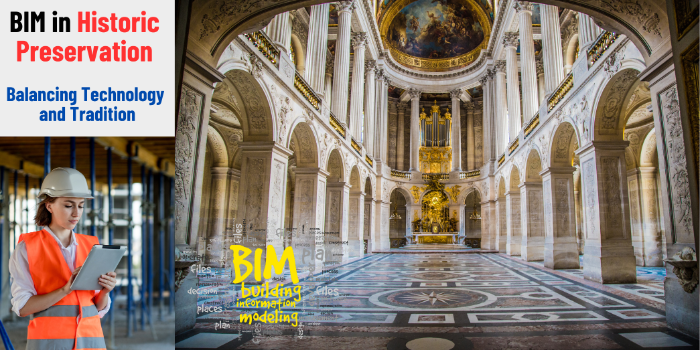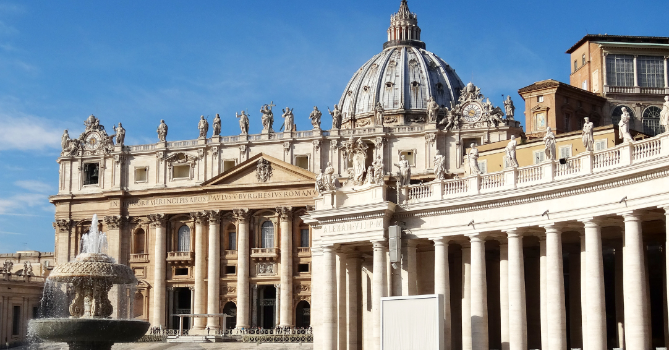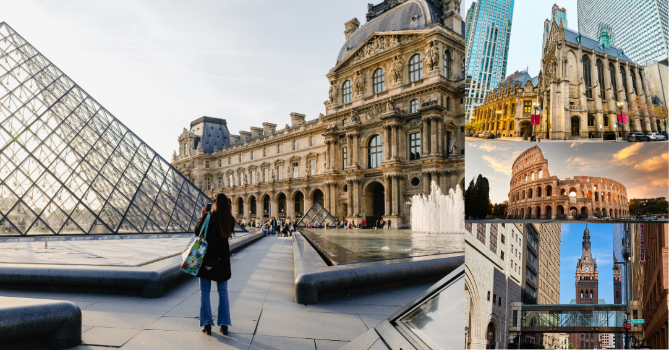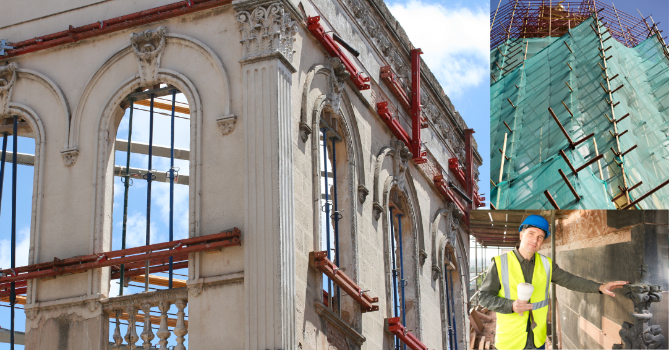
BIM in Historic Preservation: Balancing Technology and Tradition
Introduction
Historic buildings connect us to the past, showcasing architecture, culture, and history. Preserving them is important, but it also comes with challenges. Enter Building Information Modeling (BIM), a digital tool that’s transforming the construction industry. BIM creates detailed 3D models of buildings, allowing teams to visualize and plan restoration projects more effectively.
One of the main challenges in historic preservation is keeping the integrity of these old structures intact while using modern tools. BIM helps bridge this gap, offering a way to maintain tradition while introducing innovation.
In this blog, we’ll explore how BIM is enhancing historic preservation. From balancing technology with tradition to preserving the essence of these structures, we’ll show how BIM is reshaping the way we protect our architectural heritage.
The Role of BIM in Historic Preservation
BIM is transforming how historic buildings are preserved. By creating detailed 3D models of heritage structures, BIM allows architects and engineers to capture every aspect of a building’s design, from its architectural elements to its intricate details. This digital model helps teams visualize the building in a virtual space, allowing for more effective planning and restoration.

One of the major advantages of BIM in historic preservation is its precision. It records every historical detail with accuracy, from material texture to structural dimensions. These details are stored within the digital model, ensuring that restorations respect the original design while meeting modern needs. BIM also allows for ongoing updates, creating a living document that evolves with each restoration phase.
There have been several successful BIM-driven restoration projects. For example, in Scotland, BIM was used to restore the iconic Glasgow School of Art after a fire, helping to maintain the building’s historical authenticity. Other projects, like the restoration of St. Peter's Basilica, also showcase how BIM can blend technology and tradition, protecting historical integrity while modernizing the structure where necessary.
In this way, BIM offers a bridge between the past and the present, making historic preservation both precise and sustainable.
Balancing Modern Technology with Historic Preservation
Preserving historic sites while embracing modern technology is no easy task. One of the key roles BIM plays is allowing teams to maintain architectural authenticity while benefiting from advanced digital tools. By incorporating traditional materials and construction methods into the modern restoration process, BIM ensures that the building’s historical value remains intact.

BIM offers a respectful approach to renovation. For example, when a historic structure needs repair, BIM can simulate how traditional materials, like stone or timber, would interact with modern interventions. This ensures that any updates respect the original craftsmanship. BIM also allows restorers to make informed decisions about structural changes without compromising the historical character.
A great example of this balance is the restoration of the Notre-Dame Cathedral in Paris after the 2019 fire. BIM models were used to document the cathedral’s detailed architecture, ensuring that the original design would be preserved during restoration. Another example is the Teatro alla Scala in Milan, where BIM helped integrate modern safety systems into the building without altering its historic appearance.
By combining advanced technology with respect for tradition, BIM empowers preservation teams to safeguard cultural heritage while meeting modern standards.
The Benefits of BIM for Historic Preservation
BIM offers significant advantages for historic preservation projects, enhancing both collaboration and accuracy. One key benefit is the ability for architects, historians, and construction teams to work together using shared models. With BIM, everyone involved in a project can access the same 3D model, allowing for better communication and reducing the chance of misinterpretation. This is especially crucial in projects where every detail must be preserved.

BIM also reduces the risk of damage by enabling teams to plan renovations virtually before any physical work begins. This allows for potential problems to be identified and resolved digitally, protecting the building from unnecessary harm.
Another advantage is BIM’s ability to track the structural stability of historic buildings over time. By continuously updating the digital model, teams can assess conservation needs and schedule maintenance more effectively. BIM’s centralized data system ensures that all stakeholders—from architects to local authorities—have access to the most up-to-date information, improving decision-making and project efficiency.
Overall, BIM’s role in historic preservation goes beyond documentation. It actively helps protect cultural heritage through thoughtful planning and collaboration.
Challenges in Balancing Tradition with Technology
Integrating modern technology into historic preservation presents several challenges. One major issue is ensuring that new interventions, such as adding HVAC systems or elevators, do not detract from the building’s historical or cultural value. Any modern additions must be carefully planned and executed so they blend seamlessly with the original architecture. For example, adding climate control systems in a centuries-old building can be difficult without compromising the historical aesthetic.

Another challenge is funding. H-BIM projects require skilled labor and specialized software, which can significantly raise costs. Preservation projects often require a delicate balance between investing in cutting-edge technology and staying within budget. Securing the necessary financial resources for such specialized work can be difficult, especially for smaller projects.
Data management is another concern. The digital models created in BIM need to be securely stored and made accessible for future conservation efforts. Ensuring long-term access to this data, especially when dealing with older buildings, requires careful planning and secure technology systems. In short, while BIM offers many benefits, these challenges must be thoughtfully managed to protect and preserve our architectural heritage.
Sustainability and Environmental Impact
One of the biggest advantages of using BIM in historic preservation is its contribution to sustainability. Restoring existing buildings is often more environmentally friendly than constructing new ones, as it minimizes waste and preserves valuable resources. BIM plays a crucial role in these efforts by enabling teams to repurpose original materials and reduce the carbon footprint of preservation projects.

BIM’s digital simulations also allow architects to explore energy-efficient solutions, like solar panels or insulation, without affecting the building’s historical character. For example, architects can virtually test the placement of solar panels to ensure they won’t interfere with a structure’s aesthetic value. This balance between sustainability and preservation makes BIM a powerful tool for environmentally responsible restoration.
Overall, BIM promotes both historical conservation and environmental responsibility, making it an essential technology for modern preservation efforts.
Conclusion
BIM plays a crucial role in historic preservation by enhancing accuracy, improving sustainability, and fostering collaboration. Through its detailed 3D models and data-driven approach, BIM ensures that restoration projects respect the historical essence of buildings while integrating modern solutions. By adopting BIM, stakeholders can reduce risks, minimize environmental impact, and streamline communication between teams. As technology evolves, embracing BIM will help us preserve the past with greater precision and care. It’s time for preservation professionals to leverage BIM’s capabilities to protect our heritage and ensure it thrives for future generations.